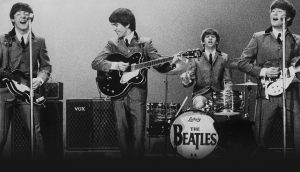George Cayea Contributor
Robert Bresson is an unknown to most, an enigma to others and a genius to the rest. The French filmmaker devised his own approach and methodology for making films. He stripped away the façade, and tried to disassociate film from the theater art from which it evolved. His concepts and theories on film as an art form influenced many during the French new wave and his impact is still visible in films of today.
Au Hassard Balthazar is often hailed as Bresson’s greatest work, a masterpiece some say, but after my first viewing, I found myself baffled as to why. It seems to be a schizophrenic story about a young girl, a sociopath and, most importantly, a tortured donkey named Balthazar. However, when one comes to understand Bresson’s style and abandons pre-conceived conceptions on what a motion picture should be, the beauty begins to manifest itself. Balthazar like all of Bresson’ films really requires multiple viewings. Upon my second viewing, the film became comprehensible and, during my third, something extraordinary.
The filmmaker is quoted as saying, “Nothing too much, nothing deficient.” This sums up any good Bresson film whether it is Mouchette, Pickpock- et or in this case Balthazar. Bresson is extremely deliberate in what is and is not shown in his films. It may seem that he is withholding details pertaining to the narrative, but that is never the case. Bresson does not show the audience what it never needed to see. He wants to keep viewers on their toes, searching for what is hidden beneath the images and sounds. Following the narrative is secondary to the understanding of any of his films, contrary to most traditional Hol- lywood pictures.
Bresson’s sense of balance goes beyond narrative exposition. He is conscious of the marriage of sound and visuals, careful not to bombard the audience as directors like Rainer Werner Fassbinder or Spike Lee do all too often. In Balthazar, one scene in particular stands out when Balthazar pulls an out of control cart ending in a wreck. During the scene, only close ups of the wagons spinning wheels, Balthazar’s feet and the broken brake are seen. The visuals are lim- ited; however, the audio is rich and intense. We hear the ever-quickening pace of Balthazar’s gait and the clattering of the wagon accelerating downhill, then an unseen but heard crash. In the final scene of his film Mouchette, Bresson uses the same technique of balance and visual omission, letting the viewer hear the action rather than see it, when a young girl rolls down a hill and into a pond.
Bresson’s main goal was to give rise to film that was free of the influences of the theater. His concept of the Model rather than an actor is one of the most notice- able attempts at stripping away theatrics.
Whether he is successful is up for debate. It certainly does eliminate any attempt at being convincing. The characters are flat, completely devoid of physical emo- tion, almost in a trance. Werner Herzog’s Heart of Glass, in which the actors were put under hypnosis prior to their performances, is one of the few films that resemble a Bressonian acting style. Although revolutionary, Bresson’s Model concept never seems to have taken hold in any cinematic movement. Acting remains a familiar and almost universal piece of the narra- tive film viewing experience.
Puzzling yet captivating, Bresson remains one of the most enigmatic filmmakers in history. His approach to filmmaking was truly unique. Never concerned with being marketable, he instead attempted to make film a unique and independent art form. Bresson remained pure to his philosophies and ideals throughout his body of work. He is undeniably one of the great artists of the 20th century.



Be First to Comment